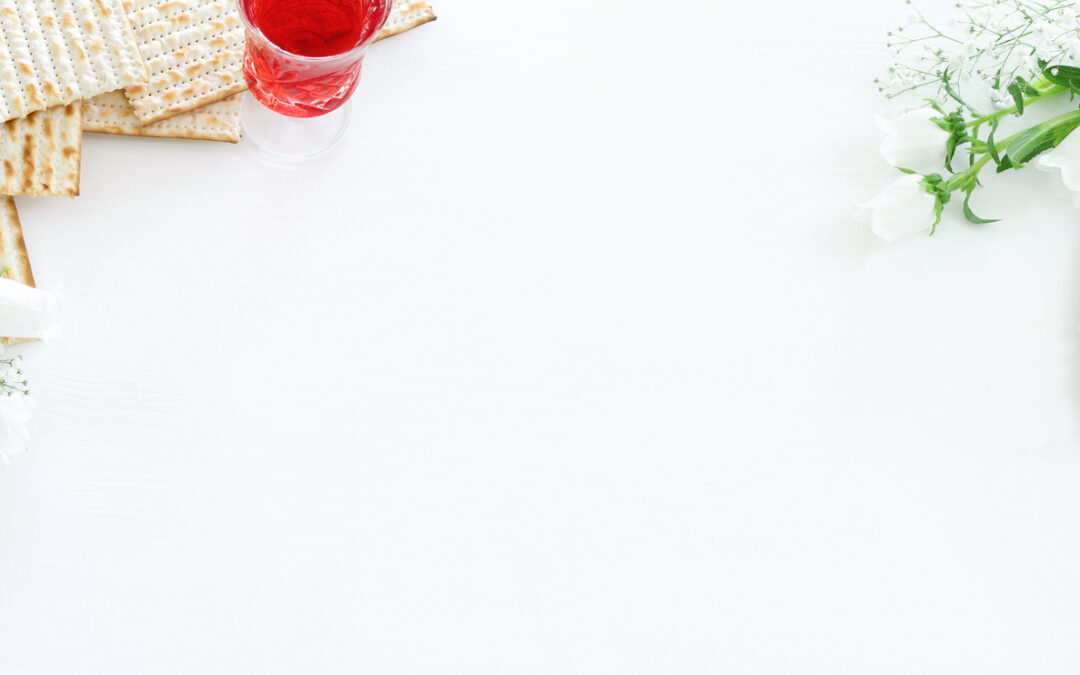What Is Passover? Understanding Some of the Passover Traditions
Passover, or Pesach, is almost here, beginning on April 16, 2022, and extending eight days, until April 23. In preparation, you may remove all leavened breads from your house, or you may plan to attend a Seder. What is Passover and why is it celebrated? What are some of its traditions and what do they mean?
What Is Passover?
Passover remembers the Biblical story of the Exodus, when the Israelites were freed from their bondage in Egypt. The Passover story is found in the Torah, where God commands Moses to have the Israelites, who are slaves in Egypt, make a mark in lamb’s blood on their doors. God then sends the Angel of Death through Egypt, taking the firstborn child in every house. The Angel of Death “passes over” those houses that have the mark of the blood of the lamb, though. In response, Pharaoh commands that the Israelites leave Egypt.
Passover begins on the 15th day of the month of Nisan (on the Hebrew calendar) and ends on the 21st (the 22nd for Reform Jews).
Understanding Some of the Passover Traditions
Within the Jewish faith, there are a number of customs surrounding Passover:
- The seder—The Hebrew word “seder,” literally translated as “order,” refers to a religious service that combines certain rituals, foods, songs and storytelling. Typically held in someone’s home, the seder takes place around a table, where those present partake of certain foods and wine, sing certain songs, tell stories and perhaps even discuss current social justice concerns.
Most often, at a seder, you’ll have a plate with different sections or partitions, each containing a very small portion of a certain type of food. This is known as the “seder plate.” The foods on the plate include:
- A roasted shank bone (Zeroa), which represents the “Passover lamb,” also known as the “Paschal lamb.” According to the Torah, the Israelites are required to ritually slaughter a lamb on the first night of Passover, to acknowledge that the blood of the lamb saved the firstborn in Egypt
- A hard-boiled egg (Beitzah), which represents spring, as well as the circle of life. The egg also represents the customary pre-holiday offering from the days of the Holy Temple.
- Haroset, a mixture of apples, pears, nuts and wine with the appearance and consistency of applesauce, which symbolizes the mortar used by the Israelites as they toiled for Pharaoh during their bondage in Egypt
- Bitter herbs, such as horseradish, lettuce, endive, chicory, melilot and sowthistle, to remind participants of the bitterness of slavery
- Karpas—Hebrew for “parsley,” the use of karpas represents the onerous work of the Israelites when they were slaves in Egypt
- Matzah—A flat, unleavened bread. Three matzot are placed on top of each other, symbolizing the three groups of Jews: priests, Levites and Israelites. The three matzot also represent the three measures of flour Abraham commanded his wife, Sarah, to bake into matzah when they were visited by three angels.
- Wine—Though not a part of the seder plate, wine is also to be consumed during the seder—the Torah calls for four symbolic cups.
- The Haggadah—A Haggadah is a book containing the story of the Passover, customarily read at a seder. The term “Haggadah” literally translates as “telling.” There are many types of Haggadot, including ones that are geared toward different ages.
- The removal of all leavened breads or foods—Leavened or fermented grain products are avoided to symbolize the haste with which the Jews had to leave before they went into the desert. When Moses led them out of slavery, they did not have time to let their breads rise. God specifically instructed Moses (in Exodus 12: 14-15) to have the Israelites eat bread without yeast and to remove all yeast from their homes.
- Extra kiddish cups at the seder table—It’s fairly common to place an extra cup on the seder table for the spirit of the prophet Elijah, who is believed to visit on Passover. Some celebrants also put a cup on the table for Miriam, the sister of Moses.
- Pillows on the chairs at the seder table—These are to symbolize that participants are free (from bondage) and may recline
Gutterman’s—Comprehensive Funeral and Burial Services for the Jewish Community
At Gutterman’s, with chapels in New York and Florida, we have provided compassionate and detailed funeral and burial services for more than 125 years. We understand the traditions and customs of the Jewish faith, and can assist you with all matters after the death of a loved one, whether it’s the determination of the order of service, the selection of a monument or memorial, the creation of a Yahrzeit calendar, the choice of a casket, the language of an obituary or arrangements for sitting Shiva.
Let us be of assistance in your time of loss. To learn more about our full range of services, call us at one of the numbers below. Our funeral chapels are open, so we are happy to meet with you in person, but we are also happy to consult with you by phone, text message or videoconferencing. Our phones are answered 24 hours a day, 7 days a week.

